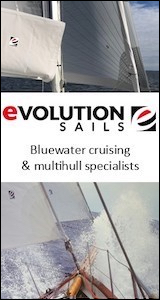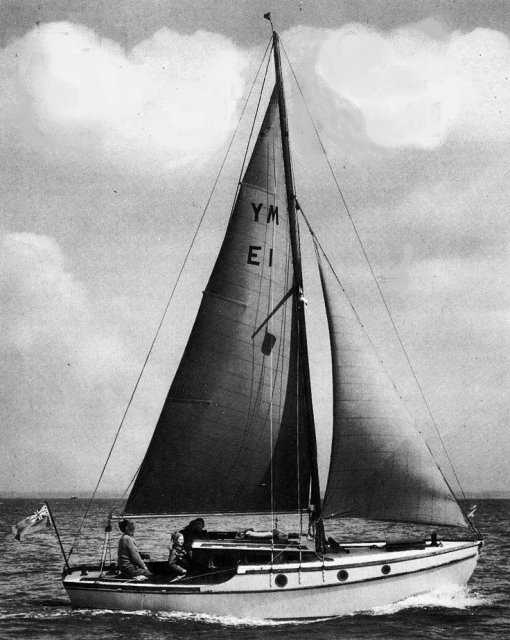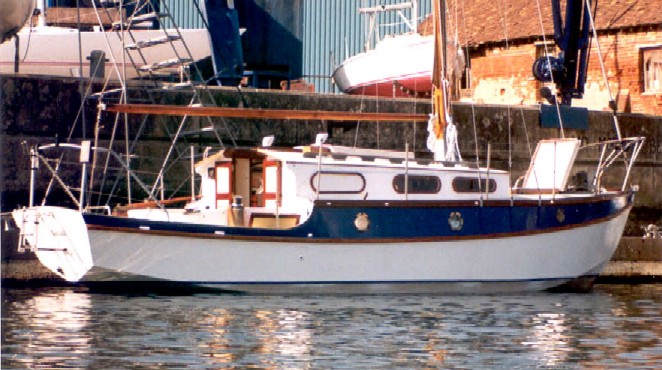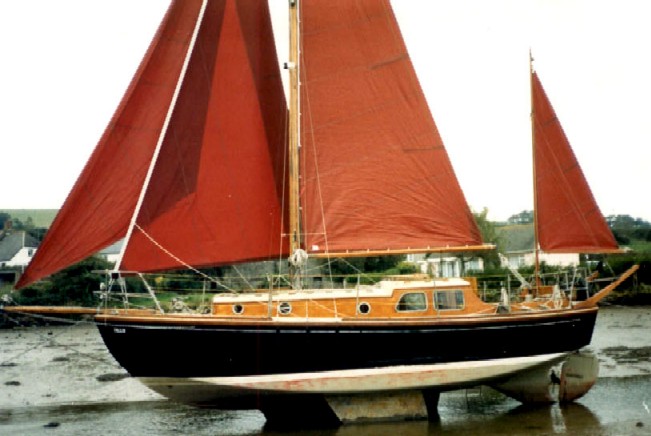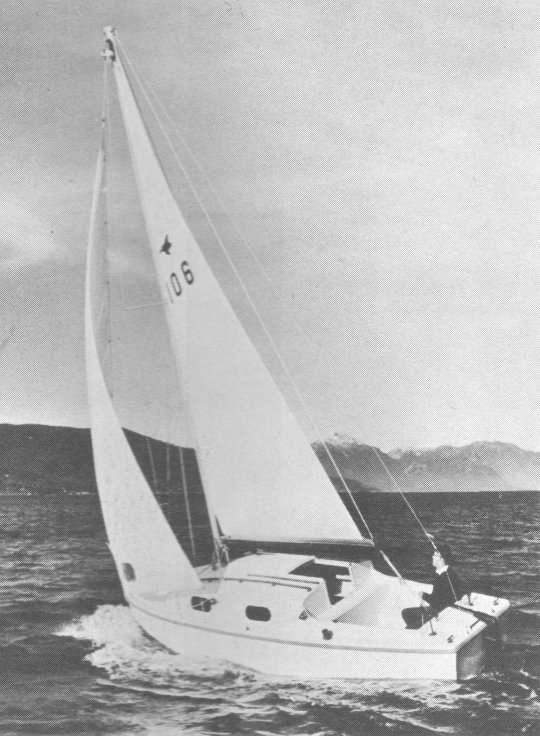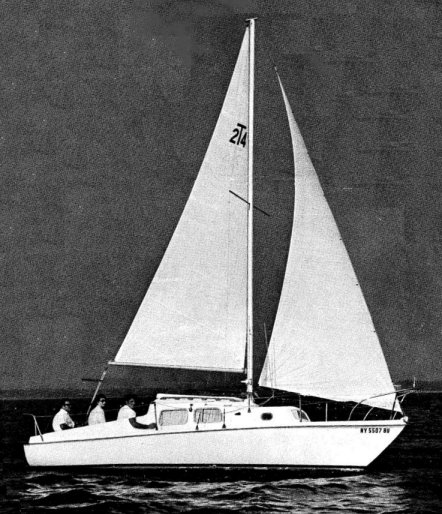The LYSANDER trailer-sailer was designed specifically for home construction by the amateur using marine ply panels laid on frames. The standard boat is 17′(5.18m) long though many ‘stretched’ 19′ (5.8m) versions have been built. The original design was gunter rigged to facilitate trailing but over the years Bermudan, cutter, gaff and even junk rig variants have been used. Some later boats were built of fiberglass (by Febris Marine UK). Plans for the home builder are still available through the class association.
Hull: Twin Keel
Plans first appeared in ‘Yachting Monthly’ (1957). The designer was editor at the time. It was an immediate success with amateur and professional builders alike. Some time later, plans for a 26′ version were issued. Draft for fin keel version: 4.5′. A production, fiberglass (26′) version, with a standard trunk cabin, appeared in 1962.
For the most complete information on all Griffiths designs see the web site shown above.
Draft for fin keel version: 4.5′.
Among the most popular Griffiths designs that appeared in ‘Yachting Monthly’ Magazine during the late 1950’s.
(The most detailed information can be found at the very thorough and informative Kingfisher owners website, listed above.)
KINGFISHER 20 (Mk1) 1959 to 1959. Sail Numbers 1 to c.6
Keels moulded out of fibreglass as part of the hull. Transom hung rudder, large transom locker, engine well with removable seat sited at aft end of cockpit, fore hatch on the fore deck
KINGFISHER 20 (Mk2) 1959 to 1967. Sail Numbers c.6 to 267
Cast Iron keels. Later versions housed the engine in the transom locker using a pivot method similar to the 20+. Otherwise as per the K20 (Mk1).
KINGFISHER 20 Fin Keel. Year and Sail Number unknown
One produced and exported to Scandinavia.
KINGFISHER 20+ 1967 to 1978. Sail Numbers 268 to 464
Rudder shaft inboard through the transom, engine on swivel mechanism within the transom locker, hinged fore hatch located on fore cabin roof. There is also a long cockpit version primarily designed for the American market. Extra 70lbs of weight.
KINGFISHER 20+JR 1975 to 1978. Sail Numbers as K20+ but with JR at the end of the number. Sail number. 414JR is the oldest member number, 412JR being the earliest I”m currently aware of.
As 20+ but junk rigged. Fore hatch back on fore deck because mast stepped though the fore cabin roof. Came with either standard windows or portholes.
KINGFISHER 22 1978 to 1981. Sail Numbers 465 to x
This is identical to the K20+ except for a change in appearance when marketed by Kingfisher Yachts. The renaming to K22 was directly related to the boat length of 21”7″ . This model was listed in the P.B.O. guide to yachts in 1978 as the Hasler KINGFISHER 22.
KINGFISHER 22JR 1978 to 1981. Sail Numbers as K22 but with JR at the end of the number.
This must be the most popular Tylercraft model since they show up on the used boat market far more often than any other. Twin and fin keel versions were available.
In 1965, Tylercraft announced that it was offering a ‘jet engine’, as an option for auxiliary power on this model and that it “used regular gasoline”. The claim attracted enough attention that is was actually mentioned in ‘Time’ magazine.
How these worked or if any were ever installed is unknown.
rb 7/08
Addendum: I have since learned that Tylercraft was the first sailboat builder (in the US) to offer a Wankel auxilary engine. Although the Wankel engine had been invented many years earlier, it was not well known in the US at the time and was sometimes mistakenly referred to as a ‘Jet’ engine.
The ATLANTA 25 was a stretched version of the HURLEY 24/70. Also known as the SAILOR 26. The hulls were molded by COLVIC Ltd. Most yachts sold were twin/bilge keel, though some fin keel versions were also built. Draft for the fin keel is 1.24m / 4.08ft
Available as the PIONEER, and the PIONEER PILOT (a pilot house motor sailer with opt. twin station steering).
Finn keel & keel-centerboard versions were also available. Also available with a Junk rig.
Newbridge Yachts went into liquidation in 1987. For a short while (until 1990) the business was revived as N.B. Yachts.
Draft for other versions:
FK: 4’/1.22m
Keel/cb BU:3.16’/.96m BD:5.25’/1.6m
A development of the orginal WIGHT Class Ketch. The MkII version is longer and has more freeboard.
A later version was called the MALIN.
